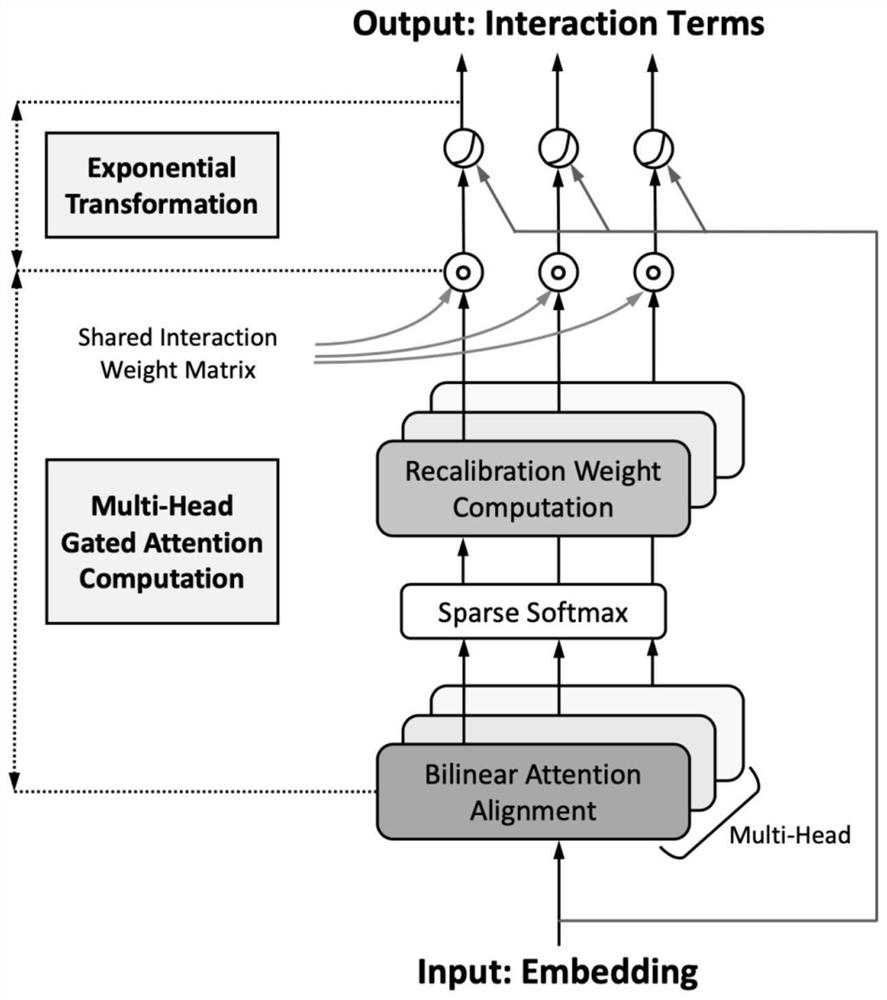Self-adaptive relation modeling method for structured data
A technology of structured data and modeling methods, applied in neural learning methods, neural architecture, character and pattern recognition, etc.
- Summary
- Abstract
- Description
- Claims
- Application Information
AI Technical Summary
Problems solved by technology
Method used
Image
Examples
Embodiment 1
[0041] Embodiment 1 implements an adaptive relational modeling method for structured data described in the present invention, which can capture the intersection features between different attributes of input tuples, specifically including the following:
[0042] Use exponential neurons to model the intersection features between the structured data attributes, the index neurons are K×o, where K represents the number of attention heads, and o represents the index neurons of each attention head The number of , K and o are natural numbers; all said exponential neurons of each attention head share its bilinear attention function φ att The weight matrix W att ;
[0043] The i-th index neuron y of each attention head i Expressed as follows:
[0044]
[0045]
[0046] Among them, i, ⊙ represent Hadamard product, exp( ) function and corresponding exponent w ij apply element-wise, e j Represents the embedding vector corresponding to the jth attribute value of the structured d...
PUM
 Login to View More
Login to View More Abstract
Description
Claims
Application Information
 Login to View More
Login to View More - R&D
- Intellectual Property
- Life Sciences
- Materials
- Tech Scout
- Unparalleled Data Quality
- Higher Quality Content
- 60% Fewer Hallucinations
Browse by: Latest US Patents, China's latest patents, Technical Efficacy Thesaurus, Application Domain, Technology Topic, Popular Technical Reports.
© 2025 PatSnap. All rights reserved.Legal|Privacy policy|Modern Slavery Act Transparency Statement|Sitemap|About US| Contact US: help@patsnap.com



